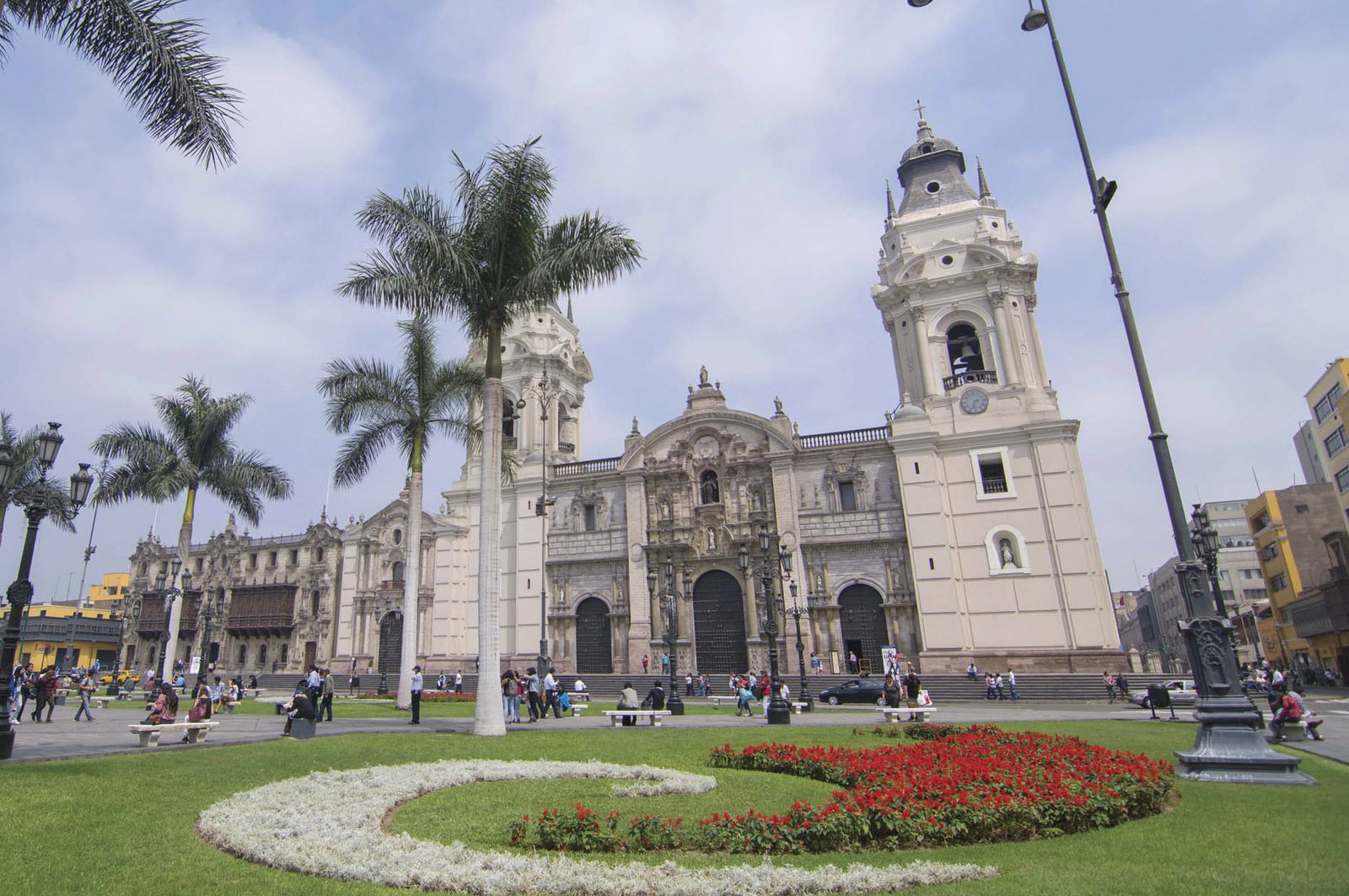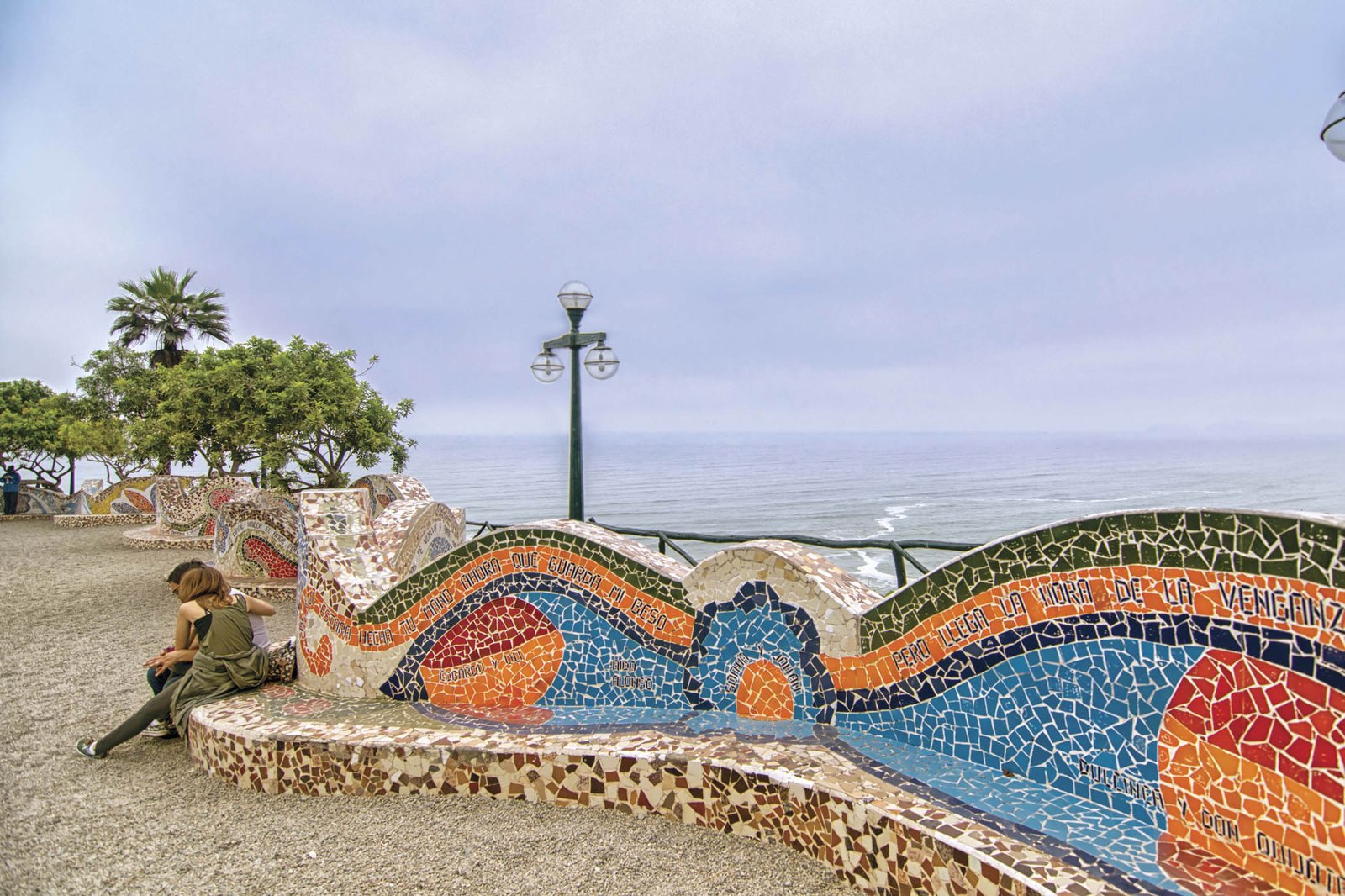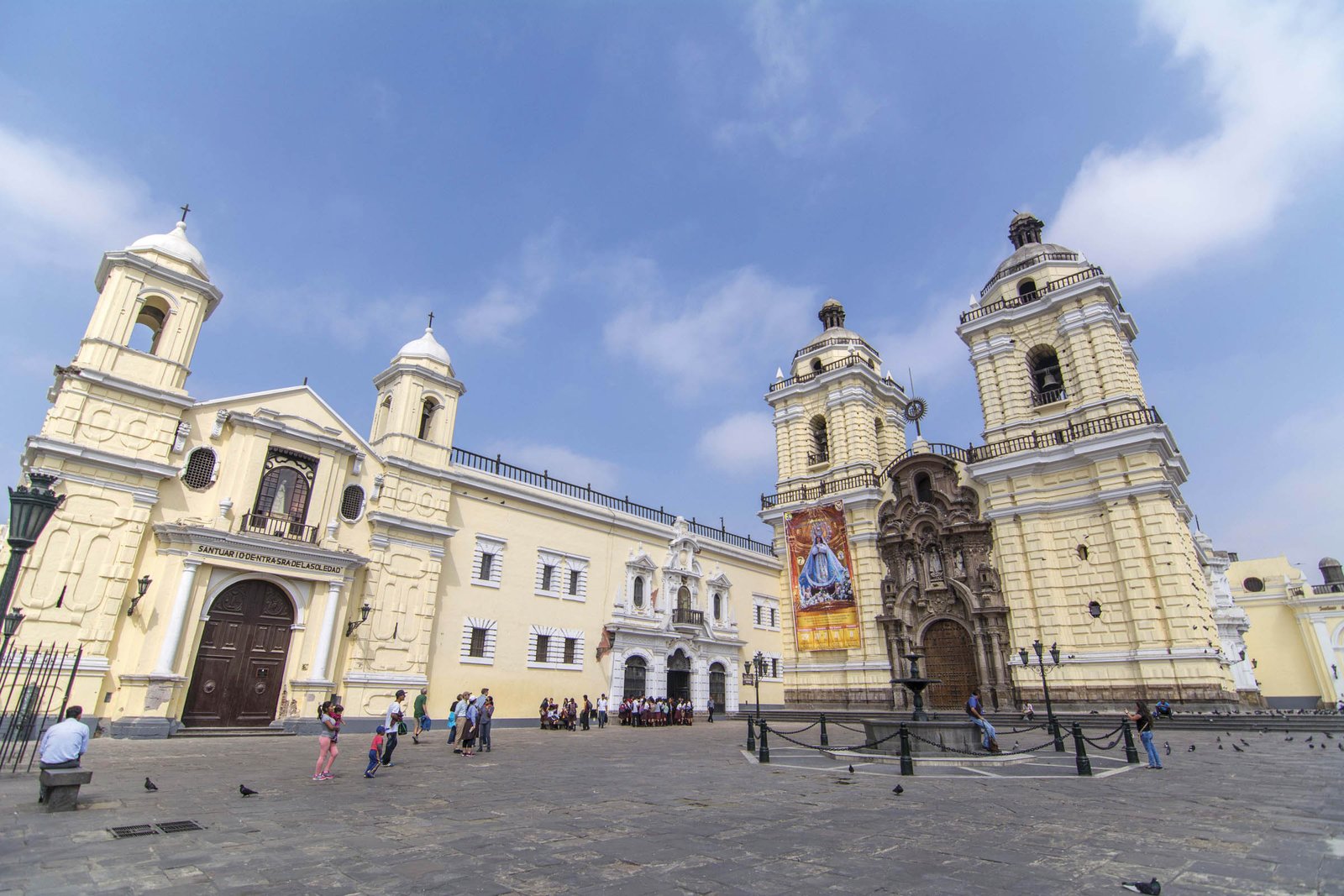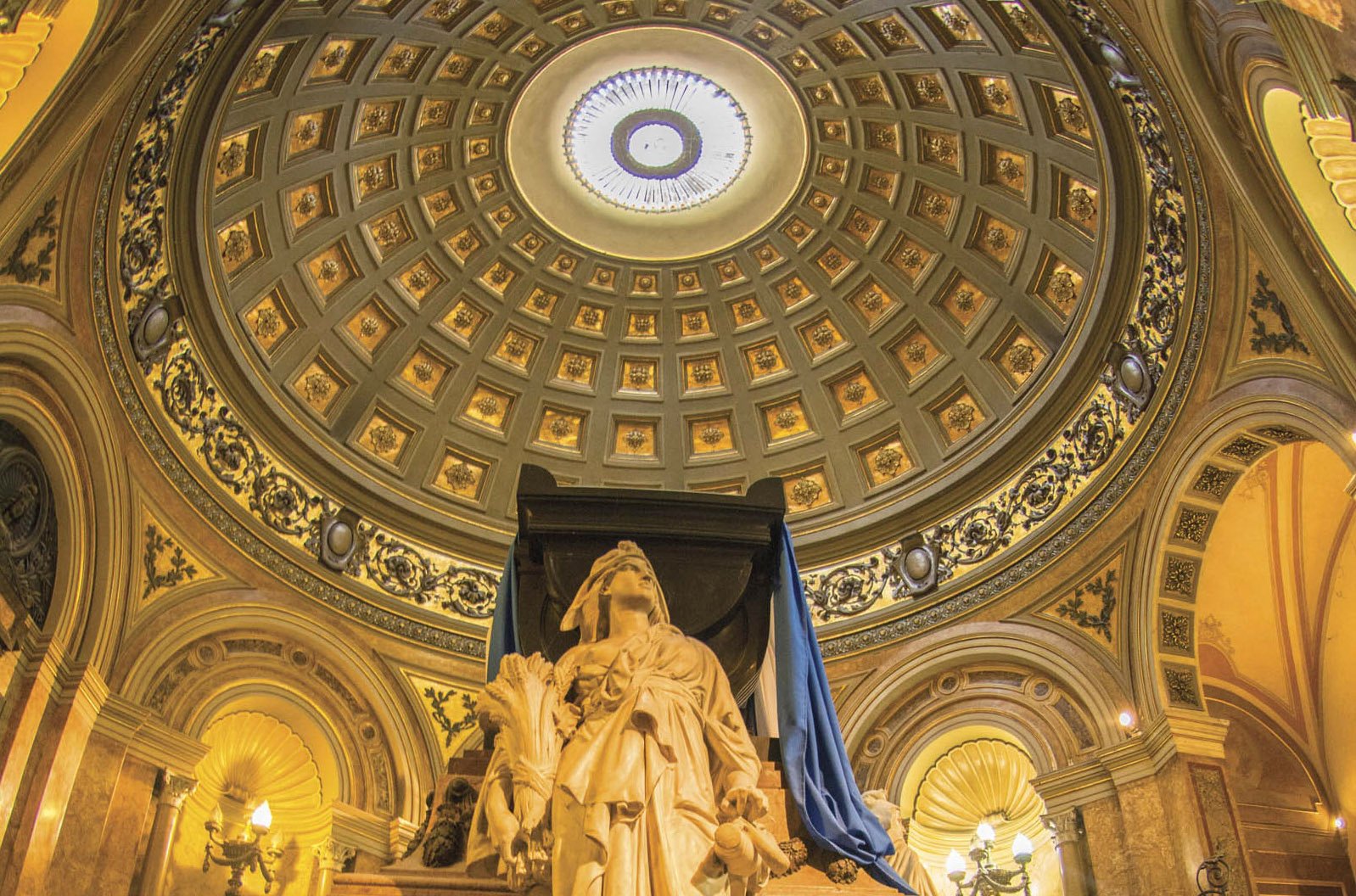
Layover in Lima
Text and photos: Javier Pinzón
I have only one day to discover the essentials of one of the largest urban centers in Latin America: Lima, whose up-and-coming economy is evident everywhere you turn. My plan is to tour the most iconic sites of this coastal city, the gateway to the splendid treasures of the Peruvian Andes and their fascinating pre-Colombian history.
Miraflores
This area is fittingly named, given the number of flower gardens spread across this tourist-friendly district that is also sprinkled with luxury apartment buildings with balconies that offer sea views in the midst of an arid landscape. Most visitors to the Peruvian capital end up in this neighborhood, since many hotel chains, restaurants, and bars can be found here. A must-see in Miraflores is Love Park, the sea views of which are a perfect setting for poetry, or Kennedy Park, better known as “cat park,” since it is home to nearly a hundred furry felines who seek to ingratiate themselves with visitors.

Barranco
This Bohemian district is dotted with stylish and colorful houses, beautiful urban amenities, and parks featuring sculptures, reading corners, and background music. One of the local attractions is the renowned Bridge of Sighs, built in 1876, that inspired famous Peruvian singer Chabuca Granda. The Bajada de los Baños, a path lined with ficus and pink bougainvillea, runs under the bridge from the cliff top to the beach. This picturesque district is also the site of the La Ermita and Santísima Cruz churches, both on the square.
Larcomar
Built into one of Lima’s steep cliffs, this shopping center cannot be called run-of-the-mill. Coffee, an artisan ice cream, or a causa (a traditional dish consisting of layers of mashed potatoes, vegetables, and fish or chicken) tastes even better when enjoyed from a vantage point 260 feet above the foaming Pacific Ocean. The terraces were designed to take advantage of the best views and connect the city’s cliff top urban heart with the beaches and waves at its feet.
Beach Circuit
Old and new Lima meet on the 7.5-mile Beach Circuit that skirts more than twelve beaches. The only road at the bottom of Lima’s cliffs is bounded on one side by strong waves that mock the Pacific Ocean’s name, and on the other by the high cliffs on which the city stands. The highway was originally intended merely to connect one side of the city to the other, but the parking lots, green areas, seating, and beaches have turned it into an attraction for both Lima residents and the growing number of tourists who visit the city. Traveling the circuit is one way to get out of the city without actually leaving. There are beaches for surfers of all skill levels, from novice to expert.

Historic Lima
Aside from its beaches, cliffs, and flowering gardens, Lima’s beauty is rooted in its rich and complex indigenous and Colonial past. Even though the great indigenous cultures did leave their mark here, Lima has the look of a Colonial city, which is not surprising, considering that the city, founded by Francisco Pizarro and known as the “City of Kings,” was the capital of the Viceroyalty of Perú and the most important city in South America during the Colonial era. In recognition of the city’s significant role, UNESCO named the Historic Center a World Heritage Site in 1991.
The Main Square
This imposing square invites strollers to pause at every one of its four corners and enjoy different perspectives of the façades that date to the founding of the city. Impressive neo-Baroque structures and Colonial balconies add their own touches, underlining the eclecticism of this plaza. Steeped in yellow, the Colonially-styled western and southern ends of the plaza are fronted by the Town Hall, the Union Club, the headquarters of Caretas magazine, and the entrance to Olaya Street; the northern side is flanked by the Government House, and to the east, also garbed in yellow, stand the Magistrate’s House, the Archbishop’s Palace, and the Cathedral.
The Cathedral
The construction of this massive, majestic, and imposing work of art began in 1535. The fourteen chapels of gilded oak —some of them of Panamanian oak—inside the cathedral have survived nine earthquakes so far. The architecture is a perfect blend of late Gothic, Renaissance, Baroque, and Plateresque styles. The floor is beautifully tiled and the roof is decorated with Gothic cupolas that recreate the look of a starry sky. A small wing adjacent to the church houses the remains of Francisco Pizarro, the founder of Lima.

San Martín Square
The Main Square may wear yellow, but this square is dressed in white. The plaza was inaugurated slightly more than a century ago in honor of Perú’s centennial. The name and its principal statue both pay tribute to liberator José de San Martín. The plaza is home to the Colón Theater, the National Club, and one of the city’s most splendid hotels: the Gran Hotel Bolívar, opened in 1924 and declared a national monument in 1972.
Magic Water Trail
Our day in Lima ends on a high note with a visit to Parque de la Reserva. After sunset, colored lights paint the water as it dances to the rhythm of music, weaving fantasy with reality as the thirteen fountains pulsate with color and sound. The interactive fountains are the favorites, with both young and old playing in the water. It is open Tuesday to Sunday, with evening shows at 7:15, 8:15, and 9:15.

Useful Information
Copa Airlines offers five flights a day to Lima on Mondays, Tuesdays, Wednesdays, and Fridays, and four flights a day on Thursdays from North, Central, and South America and the Caribbean through its Hub of the Americas in Panama City.
If you happen to have a layover in Lima during your trip to Perú, local travel agencies can arrange tours to fit your schedule, giving you the opportunity to visit some of the country’s attractions.
Don’t forget the extraordinary Peruvian cuisine on offer at Lima’s excellent restaurants, considered among the best in the world. Advance reservations are generally a good idea.